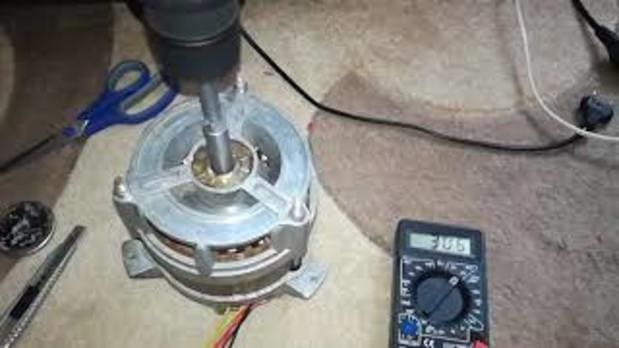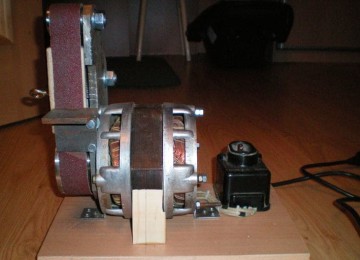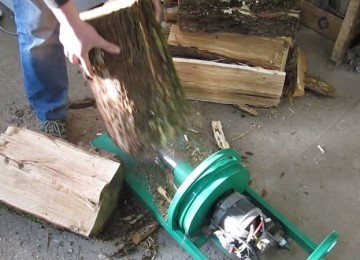 Problems with electrical energy, which usually arise unexpectedly, force many consumers to think about installing an autonomous power source. Moreover, this is also driven by exorbitant bills for using the industrial network. Installing an autonomous power source in your home is considered a profitable business. This device can come to the rescue when the industrial power grid is turned off.
Problems with electrical energy, which usually arise unexpectedly, force many consumers to think about installing an autonomous power source. Moreover, this is also driven by exorbitant bills for using the industrial network. Installing an autonomous power source in your home is considered a profitable business. This device can come to the rescue when the industrial power grid is turned off.
Its power indicator is relatively small, but this is quite enough to act as a backup power source. Buying a generator on purpose is an expensive pleasure, but making one yourself is quite possible. Today we’ll look at how to make a generator from a washing machine engine with your own hands.
Preparatory work
Many people think that making a homemade electric generator from washing machine engine – it’s not a difficult matter. Throw away all illusions, because you won’t be able to cope with such a task quickly. First of all, you need to deal with three main problematic issues:
- how to remove part of the electric motor core from the washing machine, arrange special grooves on it intended for magnets;
- where to get neodymium magnets for the generator rotor;
- what material to use to make a template to secure the magnets.
- The first question is solved as follows: a core is removed from the asynchronous motor of a used washing machine, which is cut two millimeters deep using a lathe. After such modification, we put the engine aside - you will have to look for neodymium magnets, and it is best to use the help of the Internet. Having found a store, you should submit an application for purchase and wait until the desired product is delivered, since the device cannot be made without magnets.
- On the machine we prepare grooves in the motor core for magnets; their depth should be at least five millimeters. Good lathe skills will be required, or seek professional help.
- Having carried out the preparatory work on the core, we prepare mounting templates for the magnets. You can use a piece of tin; other materials with similar properties will also work. The strip is cut to the appropriate length and width so that it can fit accurately onto the core.
- The fastening strip will also have to be prepared, for which markings are made along its entire length so that the magnets can be placed in two rows so that the distance between these magnets is the same.
- As additional materials for remodeling work washing machine engine In the generator device we will need superglue, epoxy resin or cold welding, sandpaper.
How to make a generator from an SMA engine

Having prepared everything necessary, we can begin to carry out the work. We warn you right away that it will take a lot of patience to make the desired element from a washing machine engine.The magnets will constantly jump off and stick to each other, you will smear everything with glue, so we recommend that you observe caution and safety requirements when working with potentially harmful chemical compounds.
The algorithm of actions is as follows:
- We make a magnetic rotor for an electric motor to convert it into a generator. We glue tin templates across the engine to place the magnets;
- According to the pre-applied markings, we attach two rows of magnets using superglue;
- all free space remaining between the magnets is carefully filled with cold welding, previously kneaded with hands to a plasticine consistency;
- Sand the device with sandpaper. To make work more convenient, it is recommended to secure the housing in a drilling machine.
Testing a homemade device

The process of making a generator from an engine washing machine completed, all that remains is to test it in action. To perform the check you will need:
- rectifier;
- multimeter;
- charging controller;
- motorcycle battery;
- homemade electric generator.
Think about how the rotation will take place. You won’t be able to do this with your fingers, as you won’t be able to create the required number of revolutions. We recommend using an electric drill or screwdriver.
We identify a couple of working wires on the prepared device, and cut off the rest. We connect the wires through a rectifier to the charging controller, and then to the battery. We fix the multimeter mounts to the battery terminals - the generator is ready for testing.
We charge the generator pulley into the chuck of the power tool, with which the spin will be performed, and give the speed within 800 - 1000 rotations. As a result, with moderate sticking of the magnets, you should get 270 Volts, which will be a completely acceptable indicator.
Recommendations for using a homemade generator
What is the best way to use such a device? If you install a generator on a chainsaw, you will get a small power station, the energy of which will be enough to illuminate two small rooms, run a computer and even watch TV.
Some install wind generators and generate electrical energy from the resulting mechanical energy. Generators made from not only asynchronous, but also commutator motors are suitable for this. The alternative power source is quite safe, capable of starting at a wind speed of two to three meters per second. But with ten-meter gusts of wind, such a generator will reach its maximum efficiency, although for home consumption four meters will be enough, allowing it to generate 0.15 - 0.20 kW, which will be quite enough to illuminate the room and watch TV.
It is best if the windmill you install turns out to be a three-bladed one - since it is the most efficient in operation. Use a steel rod as its base, onto which attach the generator, blades and rotor.Consider protection for the generator so that it does not suffer from adverse weather conditions. For the moving part of the wind turbine, provide a hinged mount. We lay a wire from the generator along the length of the mast, bring it out to the panel, connect the controller, inverter and battery device. As you can see, the connection diagram is simple.
Conclusion
With patience, you can make your own electric energy generator from the electric motor of an old washing machine, which will come to your aid in difficult times. Besides, With such a homemade installation, you can start saving a lot on utility bills.









